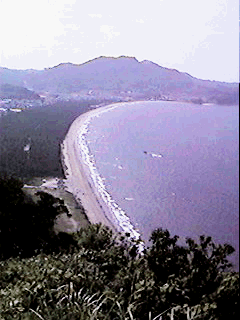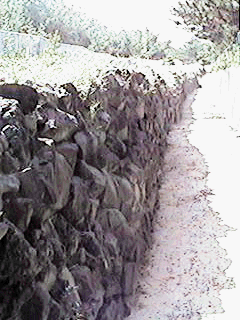In my neighborhood,there is a historical ruin.
It is a long wall build with stones,along the coast of Hakata Bay.
It is also related with wellknown Japanese word KAMIKAZE.
During the late 1200's Kublai Khan,a descendant of Genghis Khan,demanded that Japanese also recognize the Mongol overloadship.
When they refused,Kubilai Kahn decided to force the Japanese to submit.
Kublai dispatched a fleet of ships to Japan in 1274 and again in 1281.
Victory for the Mongols seemed certain. The crucial difference for the Japanese was weather.
The first invasion failed when a severe storm threatened to wreck the Mongol fleet and forced the Mongols to leave before they were victorius.
That they would return was a foregone conclusion.
For the next several years,Kamakura Bakufu(Kamakura Government) decided to constoruct a wall around Hakata Bay to contain the vaunted Mongol cavalry.
The second fleet of ships carried invading force of 150,000 Mongols.
As the fleet approached Japan,typhoons scattered and sunk many of the Mongol ship.
The Japanese were so convinced that the typhoons had been sent by benevolent kami that they named the storms "kamikaze",or "wind of kami".
"Kami"in Japanese means "god"in English.
The defeat of the Mongols gave rise to a belief that was cherished by the Japanese people for centuries therafter that Japan was under devine protection,and they boasted that their islands could not be conquered.
This belief later played an important role in the World War.

Imazu.Bay in Itoshima Peninsula.

Long Wall built along the coast of Imazu Bay.
Toward the end of The Pacific War(1944-1945),when the Japanese were fighting despereately to defeat the Allies,they formed special squadrons of pilots who volunteered to fly explosive laden planes into American warships.
The pilots who flew these suicide missions ware called "KAMIKAZE" after the winds that saved Japan from invasion almost 700 years before.
|